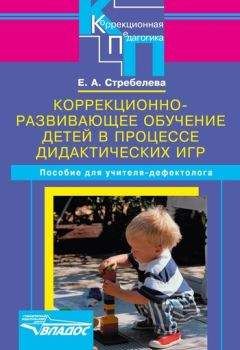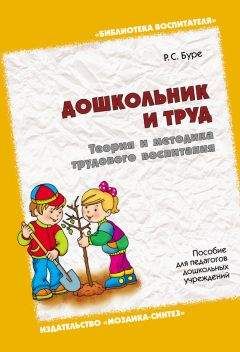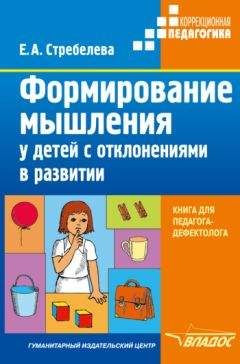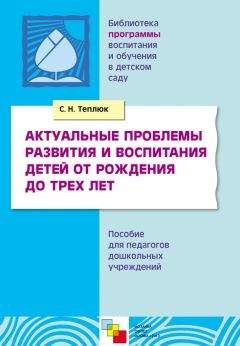Роб Найт - Смотри, что у тебя внутри. Как микробы, живущие в нашем теле, определяют наше здоровье и нашу личность
85
A. Naseribafrouei et al., “Correlation Between the Human Fecal Microbiota and Depression,” Neurogastroenterology and Motility: The Official Journal of the European Gastrointestinal Motility Society 26, no. 8 (August 2014): 1155–62.
86
G. A. Rook, C. L. Raison, and C. A. Lowry, “Microbiota, Immunoregulatory Old Friends and Psychiatric Disorders,” Advances in Experimental Medicine and Biology 817 (2014): 319–56.
87
D. W. Kang et al., “Reduced Incidence of Prevotella and Other Fermenters in Intestinal Microflora of Autistic Children,” PLoS One 8, no. 7 (2013): e68322.
88
Hsiao et al., “Microbiota Modulate Behavioral and Physiological Abnormalities Associated with Neurodevelopmental Disorders.”
89
Vijay-Kumar et al., “Metabolic Syndrome and Altered Gut Microbiota in Mice Lacking Tolllike Receptor 5.”
90
P. Bercik et al., “The Intestinal Microbiota Affect Central Levels of Brain-Derived Neurotropic Factor and Behavior in Mice,” Gastroenterology 141, no. 2 (August 2011): 599–609, 609 e1–3.
91
R. Diaz Heijtz et al., “Normal Gut Microbiota Modulates Brain Development and Behavior,” Proceedings of the National Academy of Sciences of the United States of America 108, no. 7 (February 15, 2011): 3047–52.
92
C. L. Ohland et al., “Effects of Lactobacillus Helveticus on Murine Behavior Are Dependent on Diet and Genotype and Correlate with Alterations in the Gut Microbiome,” Psychoneuroendocrinology 38 (2013): 1738–47.
93
A. R. Mackos et al., “Probiotic Lactobacillus Reuteri Attenuates the Stressor-Enhanced Sensitivity of Citrobacter Rodentium Infection,” Infection and Immunity 81, no. 9 (September 2013): 3253–63.
94
P. A. Kantak, D. N. Bobrow, and J. G. Nyby, “Obsessive-Compulsive-like Behaviors in House Mice Are Attenuated by a Probiotic (Lactobacillus Rhamnosus GG),” Behavioural Pharmacology 25, no. 1 (February 2014): 71–79.
95
Hsiao et al., “Microbiota Modulate Behavioral and Physiological Abnormalities Associated with Neurodevelopmental Disorders.”
96
S. Guandalini et al., “VSL#3 Improves Symptoms in Children with Irritable Bowel Syndrome: A Multicenter, Randomized, Placebo-Controlled, DoubleBlind, Crossover Study,” Journal of Pediatric Gastroenterology and Nutrition 51, no. 1 (July 2010): 24–30.
97
M. Dapoigny et al., “Efficacy and Safety Profile of LCR35 Complete Freeze-Dried Culture in Irritable Bowel Syndrome: A Randomized, Double-Blind Study,” World Journal of Gastroenterology 18, no. 17 (May 7, 2012): 2067–75.
98
E. Smecuol et al., “Exploratory, Randomized, Double-Blind, Placebo-Controlled Study on the Effects of Bifidobacterium Infantis Natren Life Start Strain Super Strain in Active Celiac Disease,” Journal of Clinical Gastroenterology 47, no. 2 (February 2013): 139–47.
99
M. Fr mont et al., “HighThroughput 16S rRNA Gene Sequencing Reveals Alterations of Intestinal Microbiota in Myalgic Encephalomyelitis/ Chronic Fatigue Syndrome Patients,” Anaerobe 22 (August 2013): 50–56.
100
M. Messaoudi et al., “Beneficial Psychological Effects of a Probiotic Formulation (Lactobacillus Helveticus R0052 and Bifidobacterium Longum R0175) in Healthy Human Volunteers,” Gut Microbes 2, no. 4 (July/August 2011): 256–61.
101
Medical Council, General Board of Health, Report of the Committee for Scientific Inquiries in Relation to the Cholera-Epidemic of 1854 (London, England, 1855).
102
C. A. Lozupone et al., “Diversity, Stability and Resilience of the Human Gut Microbiota,” Nature 489, no. 7415 (September 13, 2012): 220–30.
103
S. H. Duncan et al., “Contribution of Acetate to Butyrate Formation by Human Faecal Bacteria,” British Journal of Nutrition 91 (2004): 915–23.
104
World Gastroenterology Organisation, World Gastroenterology Organisation Practice Guideline: Probiotics and Prebiotics (May 2008). www.worldgastroenterology.org/assets/downloads/en/pdf/guidelines/19_probiotics_prebiotics.pdf.
105
Чтобы вы могли получить представление о результатах клинических испытаний: в перекрестном, плацебоконтролируемом, двойном слепом исследовании потребление 30 граммов в день пребиотика под названием изомальт (смесь полиолов 1-О-Dглюкопиранозила-D-маннитола и 6-О-D-глюкопиранозила-Dсорбитаола) в течение четырех недель привело к увеличению доли бифидобактерий на 65 процентов и увеличению общего количества их клеток на 47 процентов по сравнению с потреблением сахарозы. Другими словами, этот пребиотик увеличил количество представителей вида бактерий, который считается полезным, хотя прямое его воздействие на функции кишечника не изучалось. В другом исследовании, где двенадцать добровольцев принимали по 10 граммов инулина в день в течение шестнадцати дней, доля бактерий вида Bifidobacterium adolescentis увеличилась с 0,89 до 3,9 процента от общего количества микробов по сравнению с контрольным периодом без каких-либо пищевых добавок. A. Gostner, “Effect of Isomalt Consumption on Faecal Microflora and Colonic Metabolism in Healthy Volunteers,” British Journal of Nutrition 95, no. 1 (January 2006): 40–50; C. Ramirez-Farias et al., “Effect of Inulin on the Human Gut Microbiota: Stimulation of Bifidobacterium Adolescentis and Faecalibacterium Prausnitzii,” British Journal of Nutrition 101, no. 4 (February 2009): 541–50.
106
H. Steed et al., “Clinical Trial: The Microbiological and Immunological Effects of Synbiotic Consumption – A Randomized Double-Blind Placebo-Controlled Study in Active Crohn’s Disease,” Alimentary Pharmacology & Therapeutics 32, no. 7 (October 2010): 872–83.
107
D. Linetzky Waitzberg, “Microbiota Benefits After Inulin and Partially Hydrolized Guar Gum Supplementation: A Randomized Clinical Trial in Constipated Women,” Nutricion Hospitalaria 27, no. 1 (January/February 2012): 123–29.
108
Z. Asemi et al., “Effects of Synbiotic Food Consumption on Metabolic Status of Diabetic Patients: A Double-Blind Randomized Crossover Controlled Clinical Trial,” Clinical Nutrition 33, no. 2 (April 2014): 198–203.
109
J. A. Applegate et al., “Systematic Review of Probiotics for the Treatment of Community-Acquired Acute Diarrhea in Children,” supplement 3, BMC Public Health 13 (2013): S16.
110
A. P. Hungin et al., “Systematic Review: Probiotics in the Management of Lower Gastrointestinal Symptoms in Clinical Practice – An Evidence-Based International Guide,” Alimentary Pharmacology & Therapeutics 38, no. 8 (October 2013): 864–86.
111
N. P. McNulty et al., “The Impact of a Consortium of Fermented Milk Strains on the Gut Microbiome of Gnotobiotic Mice and Monozygotic Twins,” Science Translational Medicine 3, no. 106 (October 26, 2011): 106ra106.
112
H. J. Kim et al., “A Randomized Controlled Trial of a Probiotic Combination VSL# 3 and Placebo in Irritable Bowel Syndrome with Bloating,” Neurogastroenterology and Motility: The Official Journal of the European Gastrointestinal Motility Society 17, no. 5 (October 2005): 687–96.
113
D. J. Merenstein, J. Foster, and F. D’Amico, “A Randomized Clinical Trial Measuring the Influence of Kefir on Antibiotic-Associated Diarrhea: The Measuring the Influence of Kefir (MILK) Study,” Archives of Pediatrics & Adolescent Medicine 163, no. 8 (August 2009): 750–54; R. S. Beniwal, “A Randomized Trial of Yogurt for Prevention of Antibiotic-Associated Diarrhea,” Digestive Diseases and Sciences 48, no. 10 (October 2003): 2077–82.
114
“Clostridium Difficile Fact Sheet,” Centers for Disease Control and Prevention, accessed September 2014, www.cdc.gov/hai/eip/pdf/Cdiff-factsheet.pdf.
115
I. Youngster, “Fecal Microbiota Transplant for Relapsing Clostridium Difficile Infection Using a Frozen Inoculum from Unrelated Donors: A Randomized, Open-Label, Controlled Pilot Study,” Clinical Infectious Diseases: An Official Publication of the Infectious Diseases Society of America 58, no. 11 (June 1, 2014): 1515–22; Z. Kassam et al., “Fecal Microbiota Transplantation for Clostridium Difficile Infection: Systematic Review and MetaAnalysis,” American Journal of Gastroenterology 108, no. 4 (April 2013): 500–508.
116
“How Well Do Vaccines Work?”, Vaccines. gov, US Department of Health and Human Services, accessed October 11, 2014, www.vaccines.gov/basics/effectiveness.
117
“Vaccines • Disease,” Immunization Healthcare Branch, accessed October 11, 2014, www.vaccines.mil/Vaccines.
118
Y. Li et al., “On the Origin of Smallpox: Correlating Variola Phylogenics with Historical Smallpox Records,” Proceedings of the National Academy of Sciences of the United States of America 104, no. 40 (October 2, 2007): 15787–92.
119
Rob Stein, “Should Last Remaining Known Smallpox Virus Die?”, Washington Post, March 8, 2011.
120
Z. Wang et al., “Gut Flora Metabolism of Phosphatidylcholine Promotes Cardiovascular Disease,” Nature 472, no. 7341 (April 7, 2011): 57–63.
121
A. D. Kostic et al., “Genomic Analysis Identifies Association of Fusobacterium with Colorectal Carcinoma,” Genome Research 22, no. 2 (February 2012): 292–98.
122
Ley, “Microbial Ecology.”
123
C. A. Lowry et al., “Identification of an Immune-Responsive Mesolimbocortical Serotonergic System: Potential Role in Regulation of Emotional Behavior,” Neuroscience 146, no. 2 (May 11, 2007): 756–72.
124
G. A. Rook, C. L. Raison, and C. A. Lowry, “Can We Vaccinate Against Depression?”, Drug Discovery Today 17, nos. 9–10 (May 2012): 451–58.
125
“Conjunctivitis (Pink Eye) in Newborns,” Centers for Disease Control and Prevention, accessed October 11, 2014, www.cdc.gov/conjunctivitis/newborns.html.
126
J. F. Burns, “British Medical Council Bars Doctors Who Linked Vaccine with Autism,” New York Times, May 24, 2010.
127
“Possible Side Effects from Vaccines,” Centers for Disease Control and Prevention, accessed October 11, 2014, www.cdc.gov/vaccines/vacgen/side-effects.htm.
128
New York Times editorial board, “The Rise of Antibiotic Resistance,” New York Times, May 10, 2014.
129
M. J. Blaser, Missing Microbes: How the Overuse of Antibiotics Is Fueling Our Modern Plagues. New York: Henry Holt, 2014.
130
“Battle of the Bugs: Fighting Antibiotic Resistance,” US Food and Drug Administration, last modified August 17, 2011, www.fda.gov/Drugs/ResourcesForYou/Consumers/ucm143568.htm.




